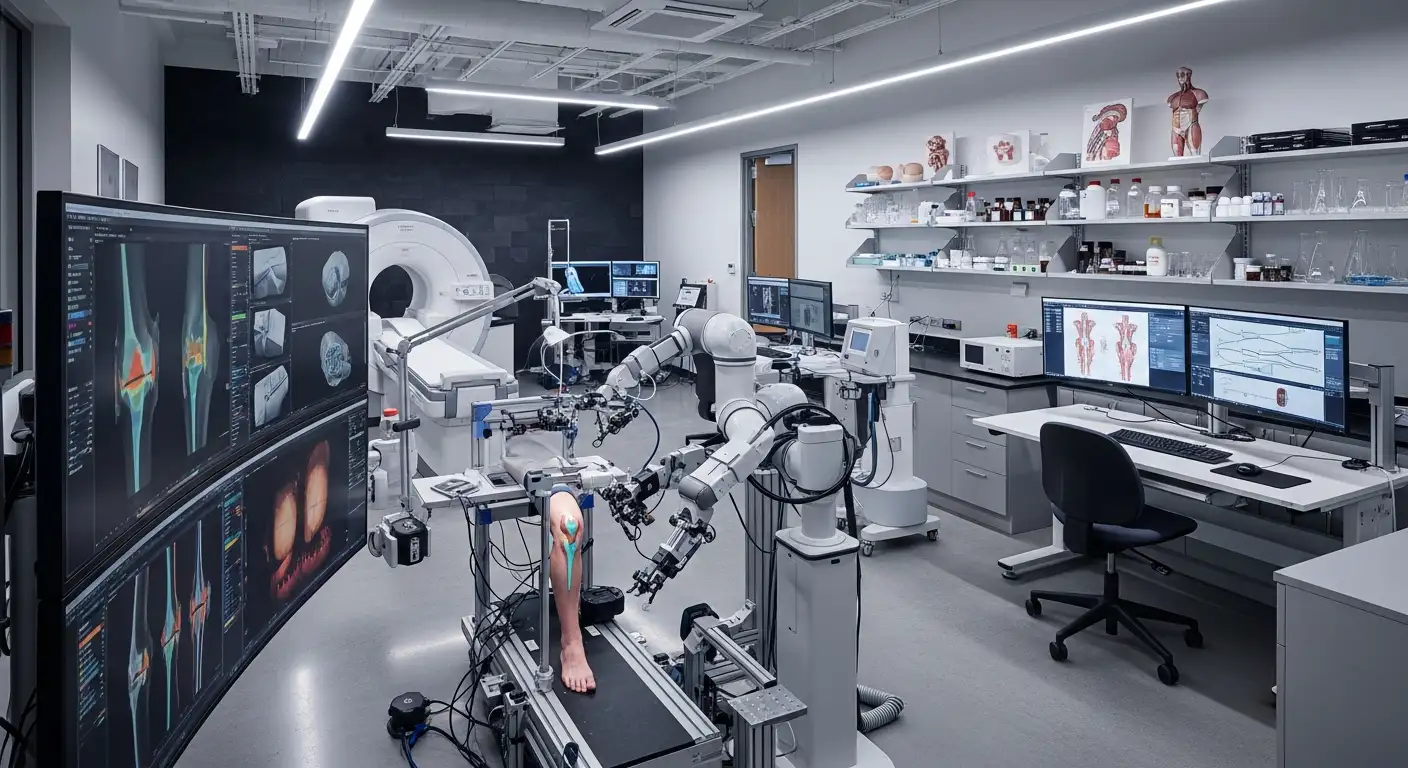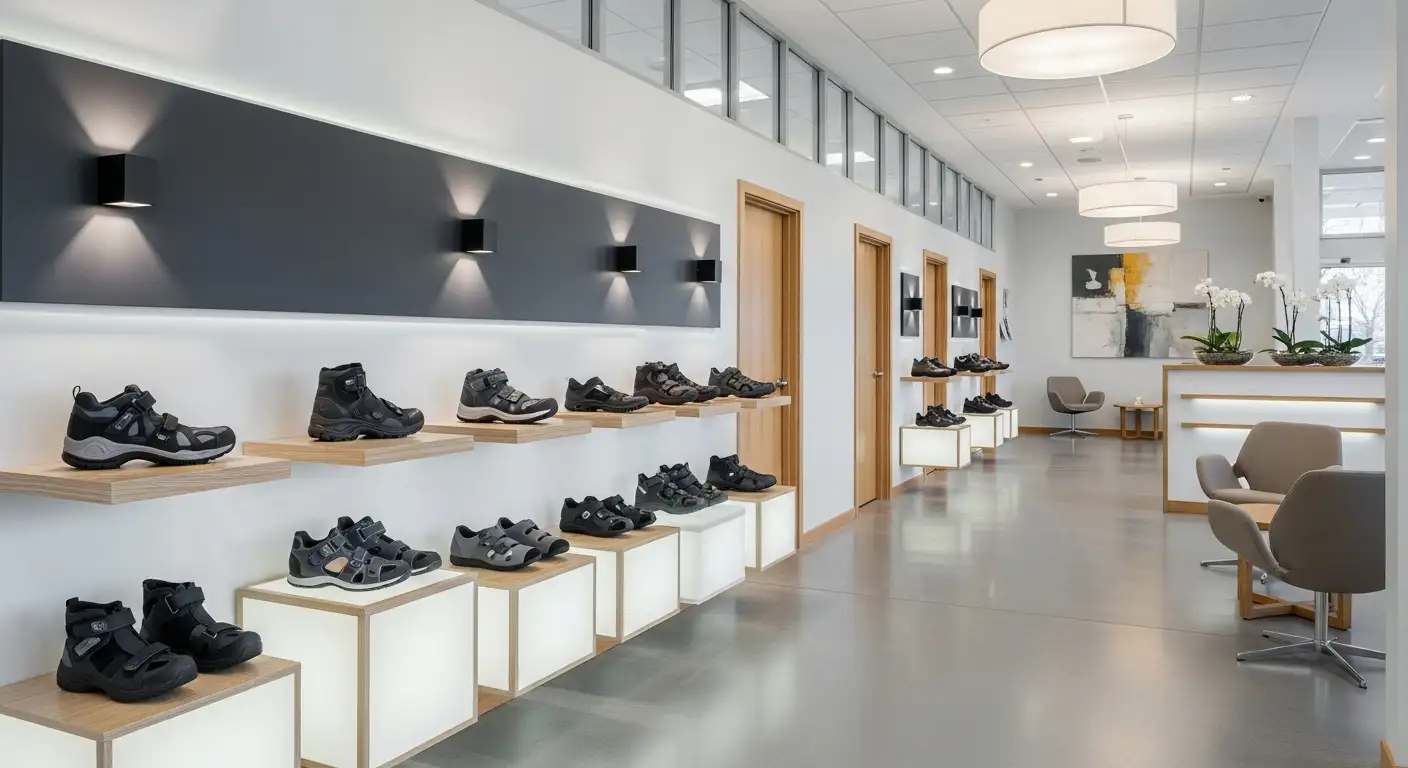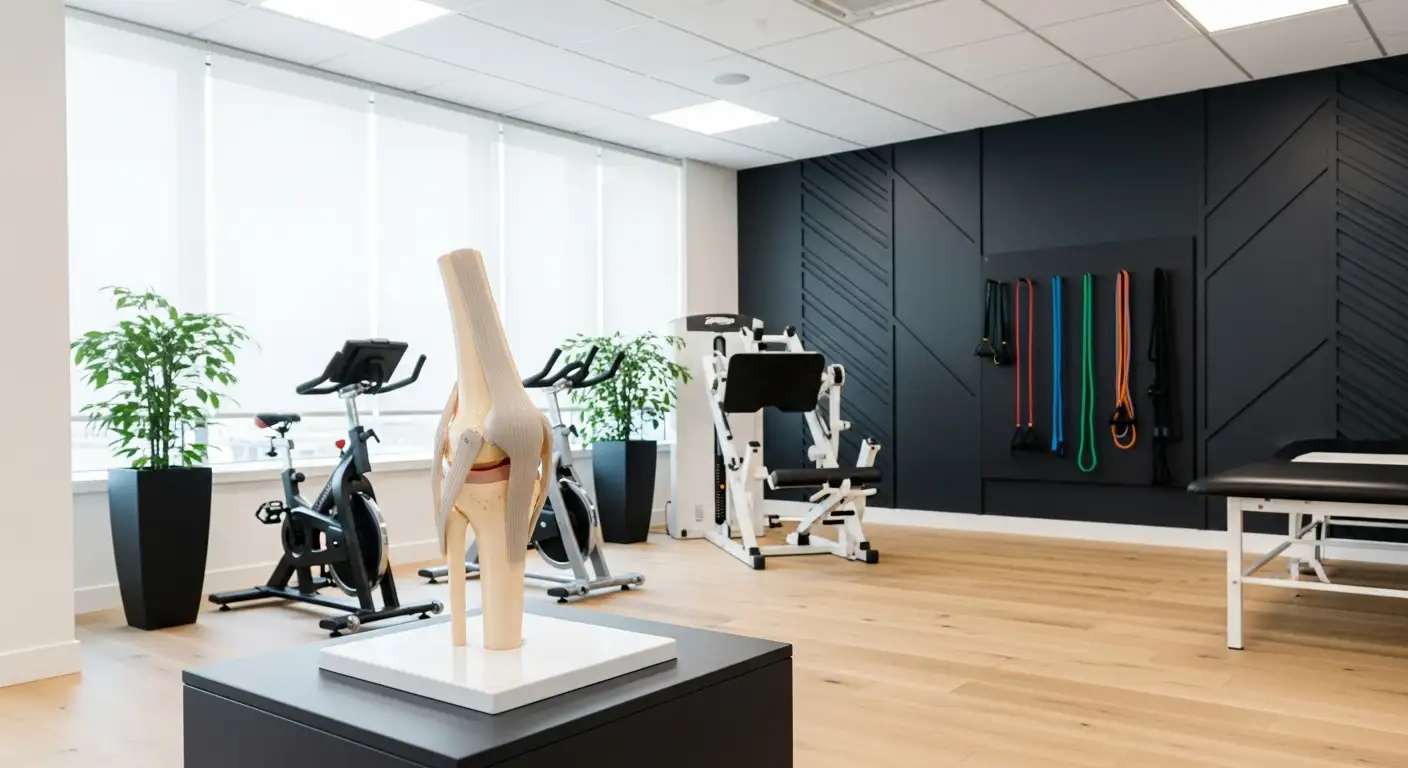Understanding Meniscus Tears
Meniscus tears can occur due to various factors and can have a significant impact on one's knee health and functionality. It's important to understand the common causes and types of meniscus tears, as well as the symptoms and impact they can have on daily life.

Common Causes and Types
Meniscus tears can be caused by sudden injury or gradual degeneration of the knee joint. Sudden injury, often associated with activities like sports or physical trauma, can result in acute meniscus tears. On the other hand, degenerative tears occur over time due to wear and tear of the hyaline cartilage and meniscus itself.
There are different types of meniscus tears, including:
- Medial meniscus tears: These tears occur on the inner side of the knee joint.
- Lateral meniscus tears: These tears occur on the outer side of the knee joint.
- Bucket handle tears: This type of tear involves a larger portion of the meniscus being displaced into the joint, causing the knee to lock up.
- Radial tears: These tears extend from the inner edge of the meniscus toward the outer edge [1].
Symptoms and Impact
Meniscus tears can cause a range of symptoms, including pain, stiffness, swelling, and a popping or clicking sensation in the knee joint. The severity of these symptoms can vary depending on the type and extent of the tear. In some cases, individuals may experience pain that is worse at night or when performing specific movements [1].
The impact of a meniscus tear can be significant, affecting knee stability and mobility. Daily activities may become challenging or restricted due to discomfort and limited functionality. Seeking proper treatment and support, such as a knee brace, can play a crucial role in managing the symptoms and promoting recovery.
Understanding the causes, types, and symptoms of meniscus tears is essential in selecting the appropriate treatment options, including the use of knee braces. However, it is always recommended to consult with a healthcare professional to receive a proper diagnosis and personalized advice for your specific meniscus tear condition.
Non-Surgical Treatment Options
When it comes to treating a meniscus tear, surgery is not always necessary. In fact, non-surgical treatment options can be effective in many cases, providing relief and promoting healing. Two common non-surgical approaches include rest, ice, and physical therapy, as well as the use of knee braces.

Rest, Ice, and Physical Therapy
Resting the affected knee and applying ice can help alleviate pain and reduce swelling associated with a meniscus tear. By avoiding activities that exacerbate the injury, the knee has an opportunity to heal naturally. Applying ice for 15-20 minutes at a time, several times a day, can help control inflammation and provide relief [2].
Physical therapy plays a crucial role in the non-surgical treatment of meniscus tears. A physical therapist can design a personalized exercise program to strengthen the muscles around the knee and improve stability. These exercises often focus on improving range of motion, flexibility, and increasing muscle strength to support the knee joint. Physical therapy can also help in improving gait mechanics and balance, reducing the risk of further injury.
Importance of Knee Braces
Knee braces are an integral part of non-surgical treatment for meniscus tears. While knee braces do not directly heal or treat the tear itself, they play a significant role in providing external support, stability, and protection to the knee during the healing process. Knee braces can also help manage inflammation, reduce discomfort, and enhance confidence in knee movement during rehabilitation exercises.
There are different types of knee braces available, including stabilizing knee braces and compression knee sleeves. Stabilizing knee braces, particularly those with hinges on either side of the knee, provide additional stability, prevent wobbliness, and aid in recovery from a meniscus tear injury. Compression knee sleeves, on the other hand, provide gentle compression to manage swelling and promote blood circulation in the affected area.
When choosing a knee brace, it's important to consider factors such as the severity of the meniscus tear, comfort, fit, and the advice of a healthcare professional. Consulting with a healthcare professional can help determine the most suitable knee brace for your specific situation and ensure that it provides the necessary support and protection during the recovery process.
While non-surgical treatment options can be effective for meniscus tears, it's essential to follow the guidance of a healthcare professional and adhere to the prescribed treatment plan. By utilizing rest, ice, physical therapy, and incorporating the appropriate knee brace, individuals can find relief from pain, promote healing, and regain stability in their knee joint. For more information on knee braces for meniscus tears, you can refer to our article on best knee brace for torn ACL and meniscus.
Types of Knee Braces
When it comes to managing meniscus tears, knee braces play a crucial role in providing support, stability, and controlled movement to aid in recovery and alleviate pain. There are different types of knee braces available, each with its own unique features and benefits. In this section, we will explore two common types: stabilizing knee braces and compression knee sleeves.
Stabilizing Knee Braces
Stabilizing knee braces are often recommended during the early stages of meniscus tear recovery. These braces provide external support and help stabilize the knee joint, reducing the risk of further damage to the meniscus. Stabilizing knee braces are designed to restrict harmful movements and maintain proper alignment of the knee.
These braces are particularly beneficial for individuals with moderate meniscus tears who may need additional support during activities. By limiting excessive movement, stabilizing knee braces can help manage pain and promote healing. They also provide a sense of confidence in knee movement during rehabilitation exercises.

Compression Knee Sleeves
Compression knee sleeves are another popular choice for managing meniscus tears. These sleeves are made of elastic materials and provide compression to the knee joint. The compression helps reduce swelling, manage inflammation, and enhance blood circulation, promoting quicker healing and reducing discomfort.
Compression knee sleeves are especially effective for individuals experiencing swelling and pain associated with a meniscus tear. The snug fit of the sleeve provides support and stability to the knee, allowing for improved mobility and comfort. These sleeves are also lightweight and can be worn during daily activities without hindrance.
When choosing a knee brace for a meniscus tear, it's important to consider factors such as the severity of the tear, the location of the tear, and the individual's specific needs. Consulting a healthcare professional, such as a physiotherapist or orthopedic specialist, can help determine the most suitable knee brace for the specific condition and provide personalized recommendations.
It's worth noting that knee braces are just one aspect of the comprehensive treatment plan for meniscus tears. They work in conjunction with other non-surgical treatment options, such as rest, ice, physical therapy, and knee strengthening exercises, to promote recovery and enhance overall outcomes.
By understanding the different types of knee braces available, individuals with meniscus tears can choose the appropriate brace to support their recovery journey. Whether it's a stabilizing knee brace for added support or a compression knee sleeve for reducing swelling and pain, these braces can play a vital role in managing meniscus tears and aiding in the rehabilitation process.
Choosing the Right Knee Brace
When it comes to selecting the right knee brace for a meniscus tear, there are several factors to consider. Consulting a healthcare professional is recommended to determine the most appropriate knee brace for a specific meniscus tear condition, taking into account factors such as injury type, severity, and lifestyle. This ensures an informed decision in selecting the right knee brace.
Factors to Consider
To choose the right knee brace for a meniscus tear, it's important to consider the following factors:
- Type of Tear: The type of meniscus tear, such as a medial meniscus tear or lateral meniscus tear, may influence the choice of knee brace. Different braces are designed to provide support and stability specific to the location of the tear.
- Severity of Injury: The severity of the meniscus tear can vary from mild to severe. A healthcare professional can assess the severity and recommend the appropriate level of support needed from the knee brace.
- Other Injured Structures: In some cases, a meniscus tear may be accompanied by injuries to other structures in the knee, such as the ACL or MCL. Consideration should be given to the overall stability of the knee and the need for additional support provided by the knee brace.
- Stage of Recovery: The stage of recovery also plays a role in choosing the right knee brace. In the early stages of recovery, a brace that provides maximum support and restricts movement may be recommended. As the healing progresses, a brace that allows for more flexibility and range of motion may be appropriate.
- Lifestyle and Activity Level: Consider your lifestyle and the activities you engage in. If you lead an active lifestyle or participate in sports that involve quick movements and changes in direction, a knee brace that offers enhanced stability and protection may be necessary.
It's important to note that the best knee brace for a meniscus tear can vary depending on individual circumstances. Therefore, consulting a healthcare professional is essential for personalized guidance.
Consulting a Healthcare Professional
Seeking the advice of a healthcare professional is crucial when choosing a knee brace for a meniscus tear. They can accurately assess the specific injury, consider individual needs, and provide expert recommendations. A healthcare professional will take into account factors such as the type of tear, severity, and overall knee stability to guide you towards the most suitable knee brace for your condition.
By consulting a healthcare professional, you can ensure that you select a knee brace that aligns with your specific requirements and aids in the recovery process. They can also provide instructions on how to properly wear and adjust the brace for optimal support and comfort.
Remember, the right knee brace can play a significant role in the healing and stability of a meniscus tear. Prioritizing professional guidance will help you make an informed decision and choose a knee brace that suits your individual needs and promotes a safe and effective recovery.
Benefits of Knee Braces
When it comes to recovering from a meniscus tear, knee braces can play a valuable role in the healing process. These braces offer a range of benefits, including pain relief, stability, and promoting faster recovery.
Pain Relief and Stability
One of the primary benefits of using a knee brace during meniscus tear recovery is pain relief. A well-constructed knee brace can help reduce direct pressure on the meniscus, alleviating discomfort and allowing for increased activity [2]. By providing external support, knee braces help stabilize the knee joint, reducing the strain on the injured area and facilitating a more comfortable range of motion.
With a knee brace, individuals experiencing a meniscus tear can feel more confident in their knee movement during rehabilitation exercises. By restricting harmful movements, the brace helps prevent further damage to the meniscus and aids in the healing process [1]. This added stability allows individuals to engage in physical activities with reduced pain and discomfort.
Promoting Faster Recovery
Knee braces can also contribute to faster recovery from a meniscus tear. By increasing circulation to the affected area, the braces promote better blood flow, delivering oxygen and nutrients to the injured site [2]. This enhanced circulation aids in the healing process, potentially reducing recovery time.
Furthermore, knee braces help manage inflammation and swelling, which are common symptoms of a meniscus tear. By providing compression and support, the braces can help control these symptoms, allowing the injured tissues to heal more effectively. Managing inflammation and swelling not only reduces discomfort but also contributes to a smoother recovery process.
Choosing the right knee brace for your specific needs is essential. Factors such as the severity of the meniscus tear, your level of activity, and the guidance of a healthcare professional should be taken into consideration. By utilizing a knee brace that suits your circumstances, you can experience the benefits of pain relief, stability, and faster recovery during your meniscus tear rehabilitation journey.
Recommended Knee Brace Options
When it comes to choosing a knee brace for a meniscus tear, there are several options available. Two commonly recommended knee brace options are rigid knee braces and hinged knee braces.
Rigid Knee Braces
Rigid knee braces offer the highest level of support for the knee, making them suitable for individuals who have also injured their ACL and require a higher level of support than what a soft brace can offer [4]. These braces are designed to prevent lateral movements that can harm the meniscus and provide stability during physical activities.
While rigid knee braces provide excellent support, they may be bulkier and less comfortable to wear for extended periods. However, they can be highly effective in providing stability and protection for the knee joint during recovery.
Hinged Knee Braces
Hinged knee braces are another recommended option for individuals with a meniscus tear. These braces are designed to provide a high level of support and control instability at the front and sides of the knee. They are suitable for meniscus tears on both sides and are often the brace of choice for ligament injuries like ACL, MCL, LCL, and PCL [4].
Hinged knee braces feature hinges on the sides of the knee, which allow for controlled movement while providing stability and support. The severity of the injury will determine whether a soft or rigid hinged brace is needed. These braces can help alleviate pain, reduce stress on the meniscus, and promote proper healing.
It's important to consult with a healthcare professional to determine the best knee brace option based on the specific nature of the meniscus tear and any other associated injuries. They can provide personalized recommendations and guidance to ensure the optimal choice for your individual needs.
While rigid and hinged knee braces are commonly recommended, there are other types of knee braces available, such as uni-compartment offloader knee braces and tri-compartment offloader knee braces. Uni-compartment offloader knee braces can shift pressure away from one knee compartment to another, reducing strain on the injured side, while tri-compartment offloader knee braces can reduce forces in all three knee compartments simultaneously. Brands like Orthomen, Breg, and Donjoy offer some of the best options in the market for these types of braces. Additionally, Spring Loaded Technology's Levitation knee brace is a tri-compartment offloader designed to reduce forces in all three compartments of the knee, making it suitable for meniscus tears, especially in the presence of knee osteoarthritis.
Ultimately, the choice of knee brace should be based on the recommendations of a healthcare professional and the specific needs of the individual. It's important to select a knee brace that provides the necessary support, stability, and comfort to aid in the recovery process and protect the meniscus.
References
[1]: https://icarusmedical.com/blog/choosing-a-knee-brace-for-meniscus-tears/
[2]: https://www.mcdavidusa.com/blogs/posts/can-knee-braces-help-you-recover-torn-meniscus-injury
[3]: https://springloadedtechnology.com/2021/02/the-best-knee-brace-for-meniscus-tears/
[4]: https://www.exakthealth.com/en-US/blog/knee-brace-for-meniscus-tear




